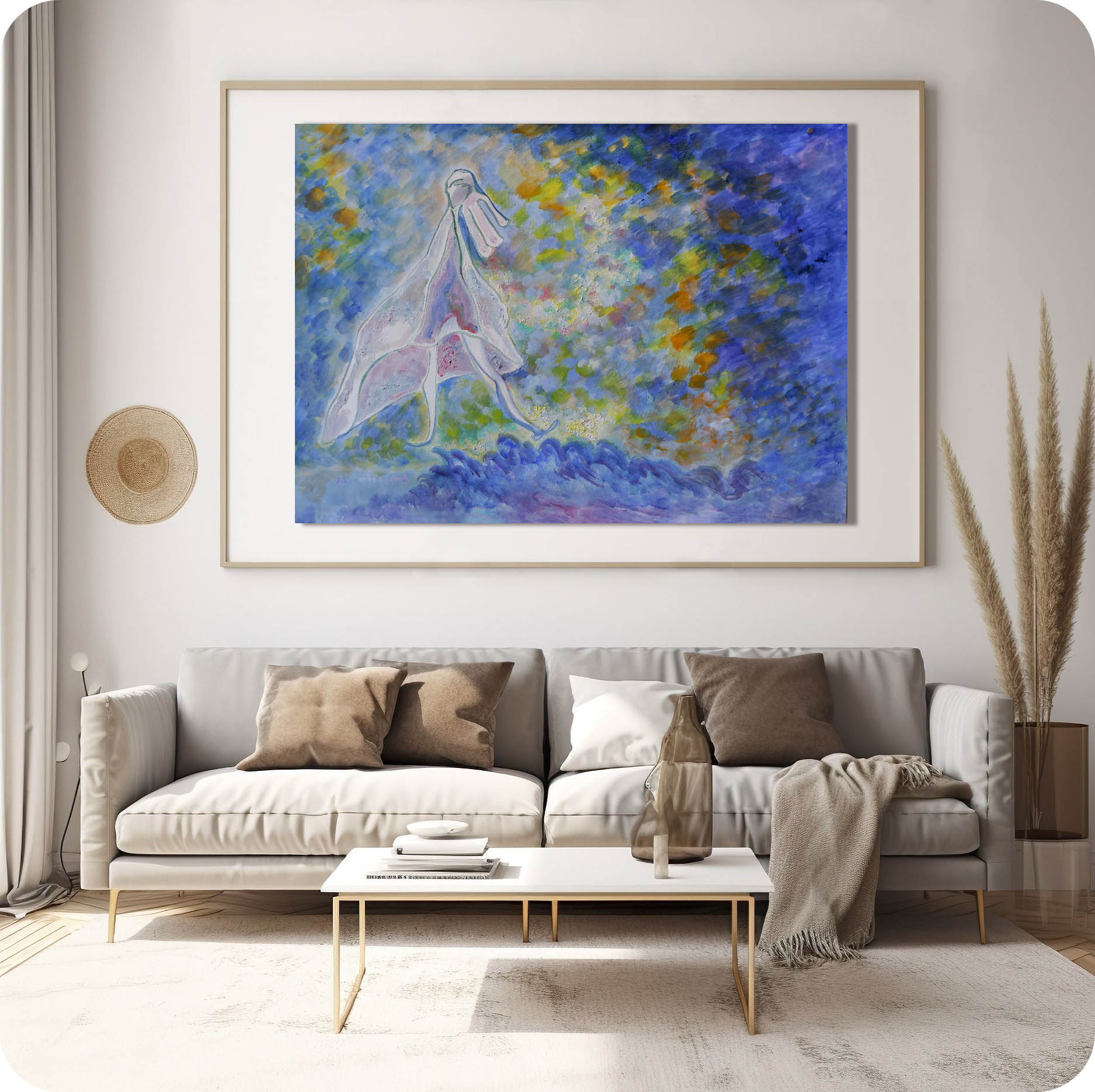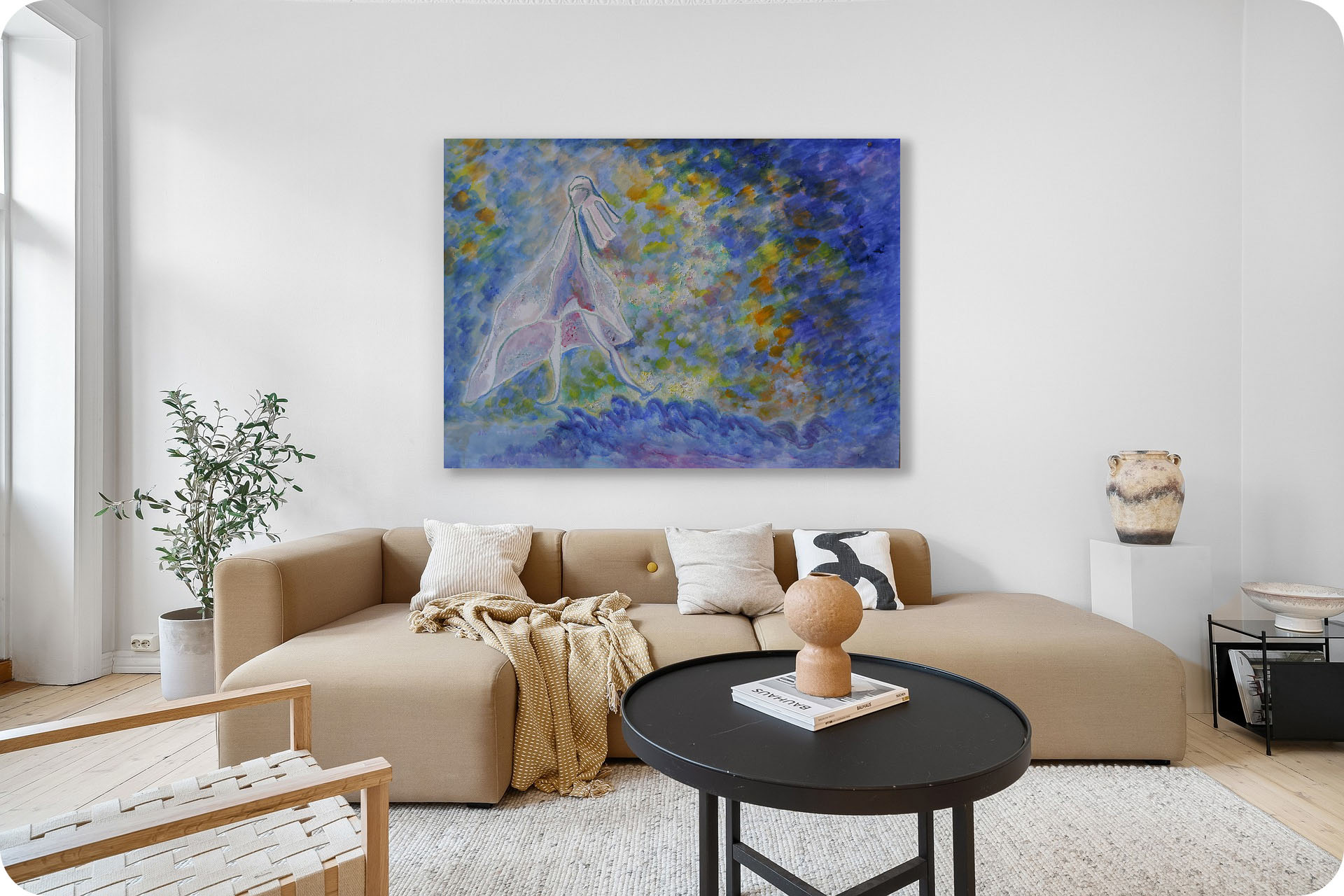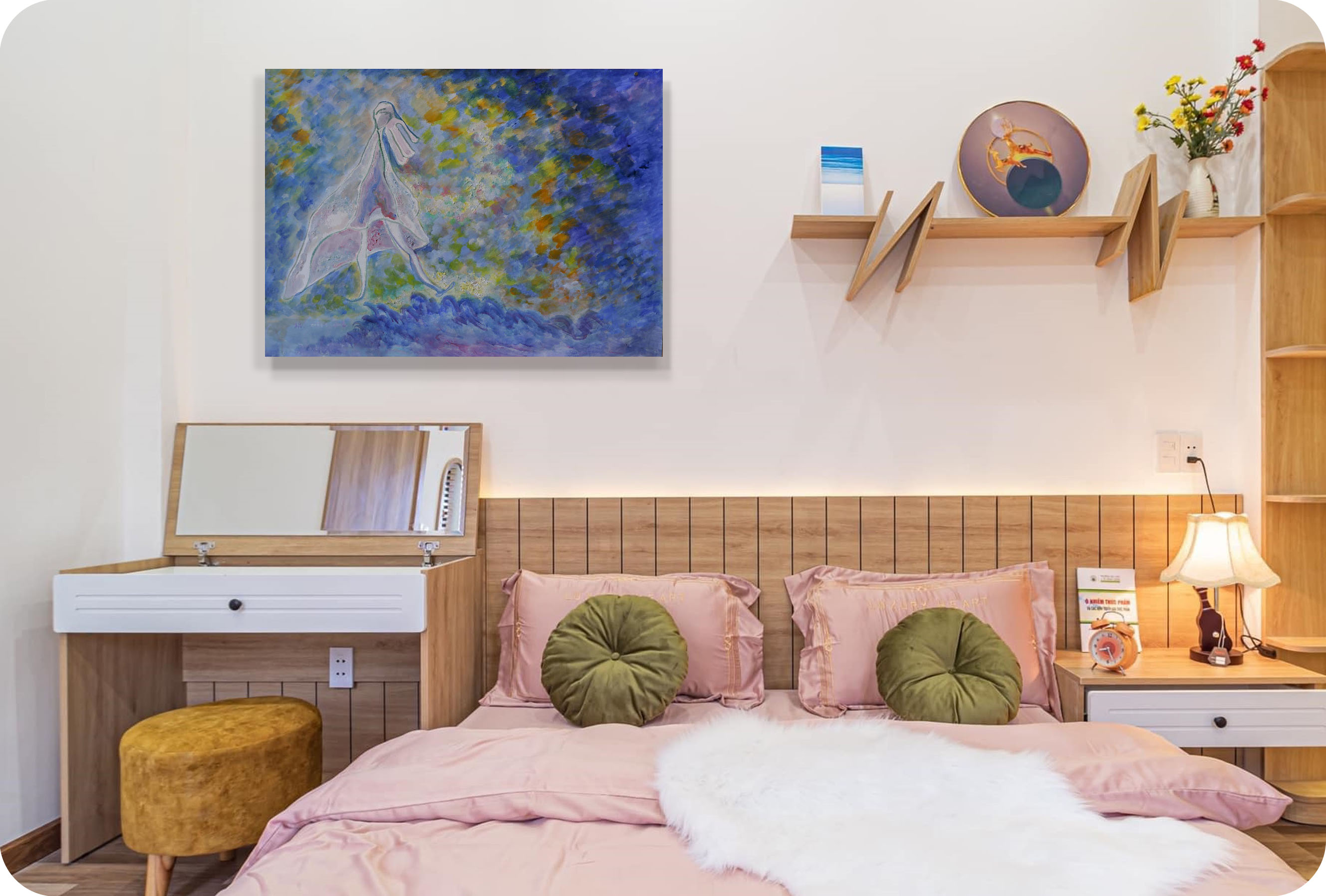This painting was created in 2024. The colors of this year are still bright but not dazzling. I have gradually found a balance point among the bright colors.
This is the name of a character in the novel I am writing - yumu, which means rain curtain. I write very slowly. You will see his story in the future, maybe ten years later or even later.
Inches: x in
Size without the frame: x cm
Country: China
Date: 2024
Materials: Acrylic paint on paper.
Condition: well preserved
Creative themes and style | My works revolve around the creative concept of "The land of humanity, People on the land".The people in the painting are people in nature, and the lines, shapes, and colors are close to nature. The nature in the painting is nature in the eyes of humans, existing in interaction with humans.I don’t pursue a series of works with a fixed and continuous style. I hope that the style of the pictures will synchronize with the changes in my life and always remain oscillating. The performance of the work must be in sync with the development of one's own life in order to be Sincere and powerful.Ideas are later.
An Interview with Artist Philo by Artphiloso Gallery
If you would like to collect this artwork or know more about the artist, please contact us.
art in a room,art in room wall,artwork for family room,wall decorations for rooms.



I. Color and Atmosphere
This painting invites viewers into a dreamlike realm, where blue and violet tones spread across the canvas like a soft veil, forming the hazy embrace of a “rain curtain.” Within this cool expanse, bursts of yellow, green, and orange appear as luminous accents—symbols of vitality breaking through the dampness. These bright hues animate the scene with a sense of rhythmic energy, suggesting that even within obscurity, life pulses with movement and hope.
II. The Human Figure
At the center, a simplified figure emerges with graceful, flowing outlines. The figure’s presence feels ethereal, resembling an elf-like being stepping lightly from the rain curtain into the open world. The soft, almost transparent form embodies both fragility and resilience. Instead of being subdued by the curtain of rain, the figure seems to dance within it, embracing both the moisture and the brightness it conceals.
III. Reimagining the Rain Curtain
Traditionally, rain evokes feelings of melancholy or heaviness. Yet in this painting, the artist transforms that perception. The rain curtain becomes a gentle embrace, rather than a cage. The colorful fragments scattered throughout the canvas function as sparks of hidden hope, guiding the figure forward. The message resonates clearly: life’s challenges may obscure clarity, but with a positive outlook, one can break through the haze, discover brightness, and find lightness even in adversity.
IV. Line, Form, and Spirit
The figure’s outline is minimal and abstract, intentionally avoiding strict realism. This simplification allows the work to communicate spiritual essence rather than physical detail. The blending of the figure with its atmospheric surroundings blurs the boundaries between reality and dream. The result is an aesthetic of freedom, where the soul is released from material constraints and allowed to wander in a poetic, imaginative space.
V. Philosophical Resonance
Through its fluid lines and shimmering colors, this painting turns a common scene—a curtain of rain—into a romantic and symbolic vision. Every hue carries emotional weight, dissolving negativity and constructing a pathway toward hope. The work reminds us that even under the veil of rain, life holds possibilities for brightness and poetry. With an optimistic perspective, one can dance within uncertainty, just as the figure here moves gracefully, embodying resilience and inner freedom.
Marc Chagall, Promenade: Dreamlike colors and poetic romance that merge reality with fantasy.
Joan Miró, Harlequin’s Carnival: Abstract imagery and vibrant hues conveying symbolic and playful energy.
Wu Dayu, Rhythm of Colors: Expressive brushwork and lyrical color harmonies that build rhythm and vitality.
Paul Klee, The Path to Parnassus: Abstract structure and symbolic color, presenting a spiritual journey through form and tone.
The figures are not fully realistic but outlined with ethereal contours, their bodies seeming almost dissolved by rain and light. This treatment reinforces the imagery of “human presence dissolving into nature,” expressing the dreamlike sensation of walking within a curtain of rain.
The artist draws inspiration from Impressionism and Pointillism, layering color dots to create the interplay of light and rain. Rather than a mere background, it becomes a fusion of rain, air, and color, uniting environment and emotion into one expressive field.
The word “curtain” carries a sense of theatricality and separation, suggesting that rain is not only a natural phenomenon but also a psychological barrier between the self and the outside world. Figures moving through the rain curtain seem to enter a spiritual stage, blurring reality and inner experience.
Blues and purples evoke quietness and contemplation, while accents of yellow-green introduce hope and a sense of movement. This color combination offers a meditative viewing experience, making the painting especially suitable for therapeutic spaces or tranquil interior design.
The Rain Curtain is not merely a landscape, but a threshold between psyche and nature. It merges the act of walking with the imagery of a rain veil, symbolizing transitional moments in life. The work is highly suitable for collections emphasizing existential philosophy, inner journeys, or the poetic spirit of nature in contemporary art.
A: Click here to view ARTPHILOSO's Guide for Collectors.
